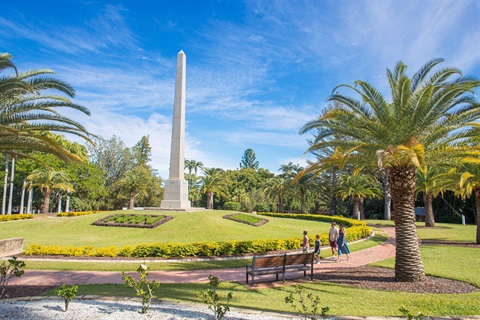
October 16 is a special day in the Region's history as the Rockhampton War Memorial at the Botanic Gardens marks its centenary.
Deputy Mayor and Communities, Culture and Heritage Councillor Drew Wickerson said it was important to recognise the history and meaning of the war memorial in its 100th year.
Erected in 1924 from Gracemere grey granite, the 64-foot tall war memorial was a regional monument for Rockhampton and the surrounding districts to recognise men and women who served in World War 1.
"It enables the community to gather as one to reflect on their service, and it also allows their names live on in history as we continue to honour their courageous acts and service," Cr Wickerson said.
"The war memorial was designed by architects Hockings and Palmer who used the obelisk as a symbol of regeneration which was important following the war.
"At a cost of £2,654, it was built by monumental mason FM Allan and Richard Simmons landscaped the surrounding grounds which feature Canary Island Date palms symbolising victory."
Rockhampton's memorial was among Australia's first national monuments which were established after the first world war to reflect the profound impact the war had on the young nation.
"With 60,000 soldiers lost from a population of around four million—one in five of those who served—the war's effects were unprecedented," Cr Wickerson said.
"Even before the war concluded, these memorials were a powerful expression of national grief.
"Australia War Memorials are unique because they convey our pride in all who served, and not just commemorate the dead, because our country's first great national army was made up of volunteers, which is deserving of honour."
It was at a public meeting in February 1919 that a decision to erect a memorial in Rockhampton was made, with a site along the Fitzroy River originally selected but due to costly designs, it was changed to the Botanic Gardens in 1922.
"The unveiling of the War Memorial on 16 October 1924 was a highly anticipated event as the then Governor of Queensland Sir Matthew Nathan was to attend ceremony and the school children were given a half of the day off school to attend it," Cr Wickerson said.
"It's now 100 years on and we have this significant piece of history in our beautiful Botanic Gardens as place where thousands can gather annually at dawn for Anzac Day ceremonies.
"It remains a place where we can remember and tell future generations about the sacrifices that were made so we can enjoy this wonderful country we live in today."






